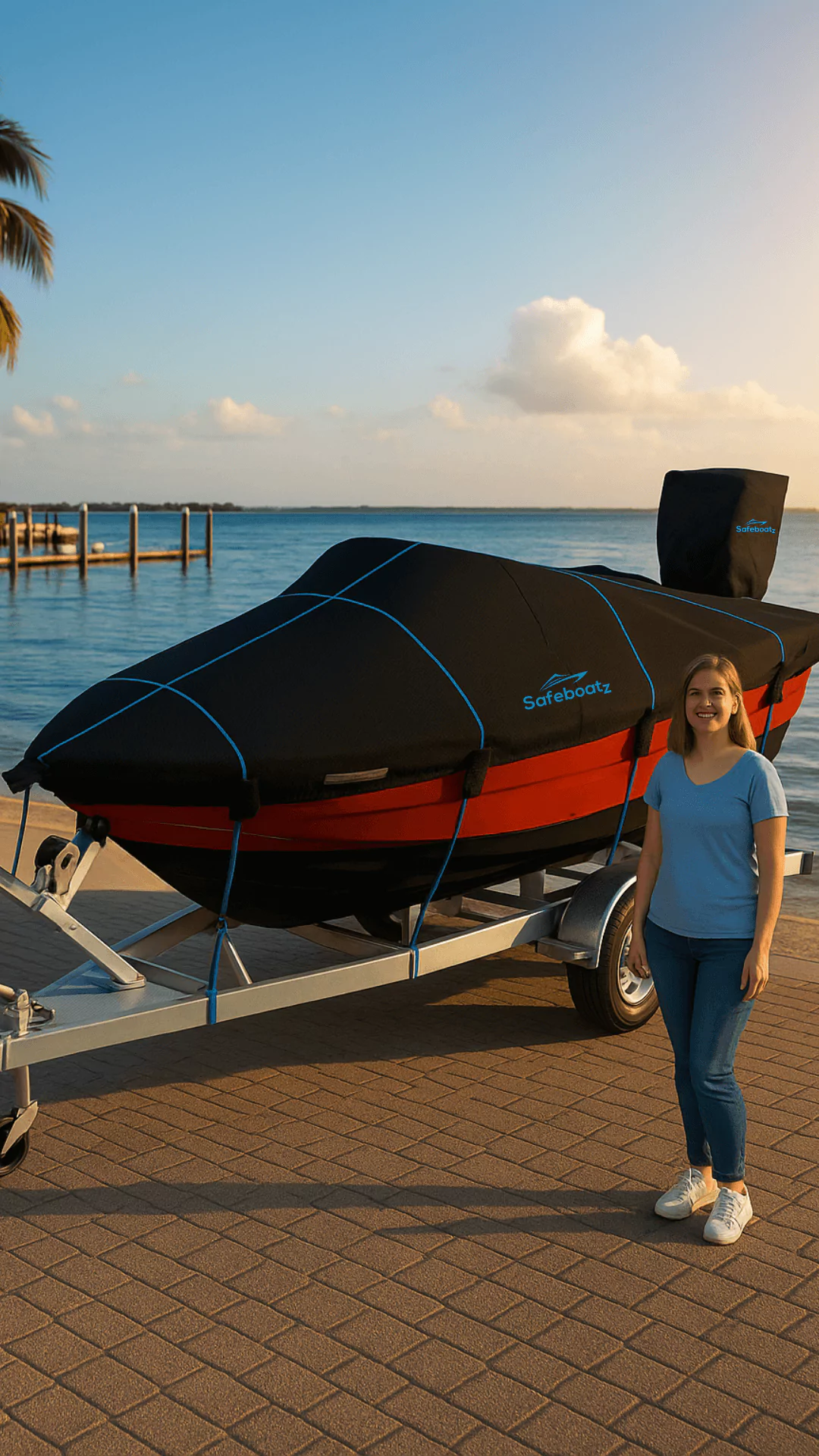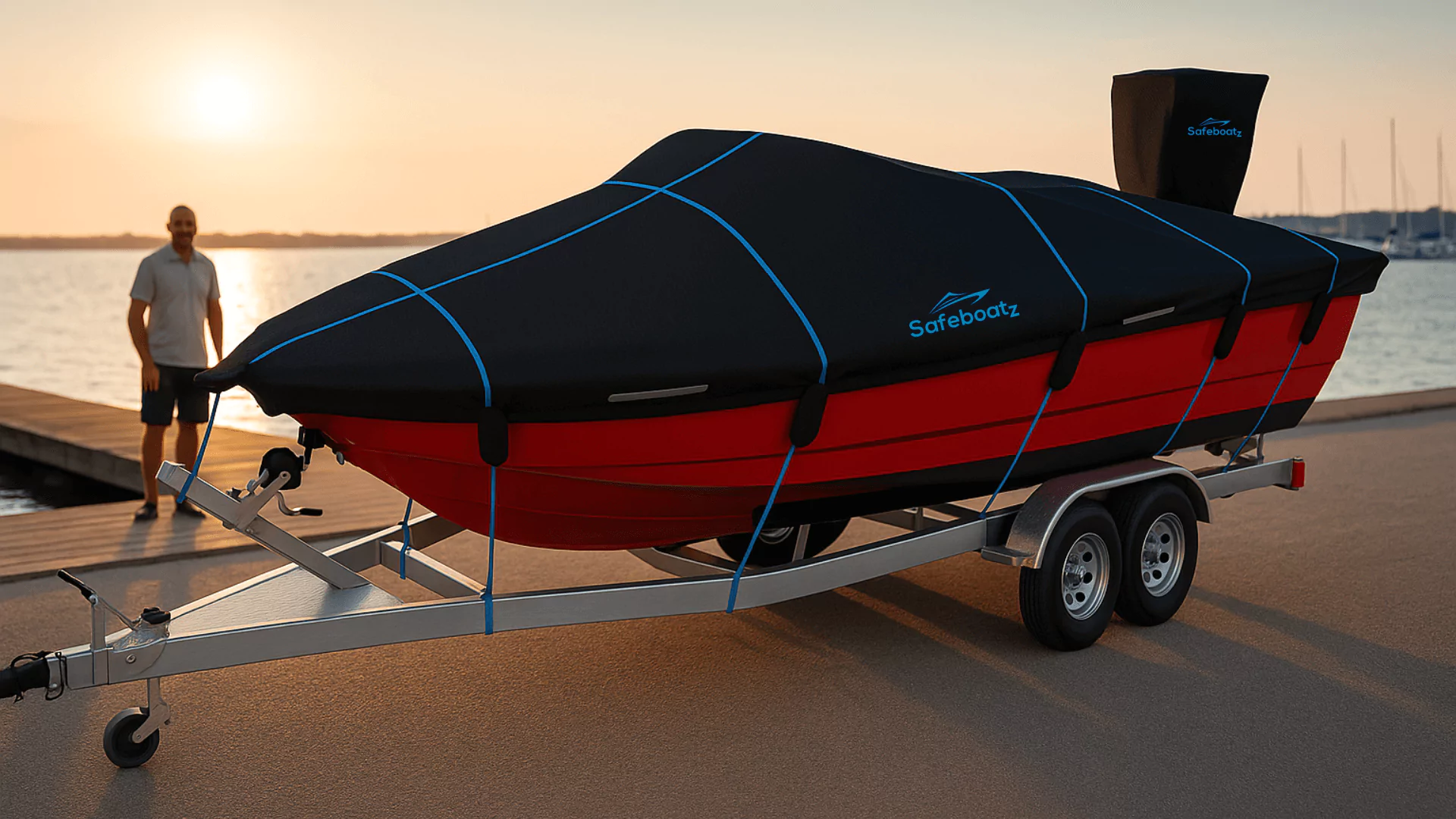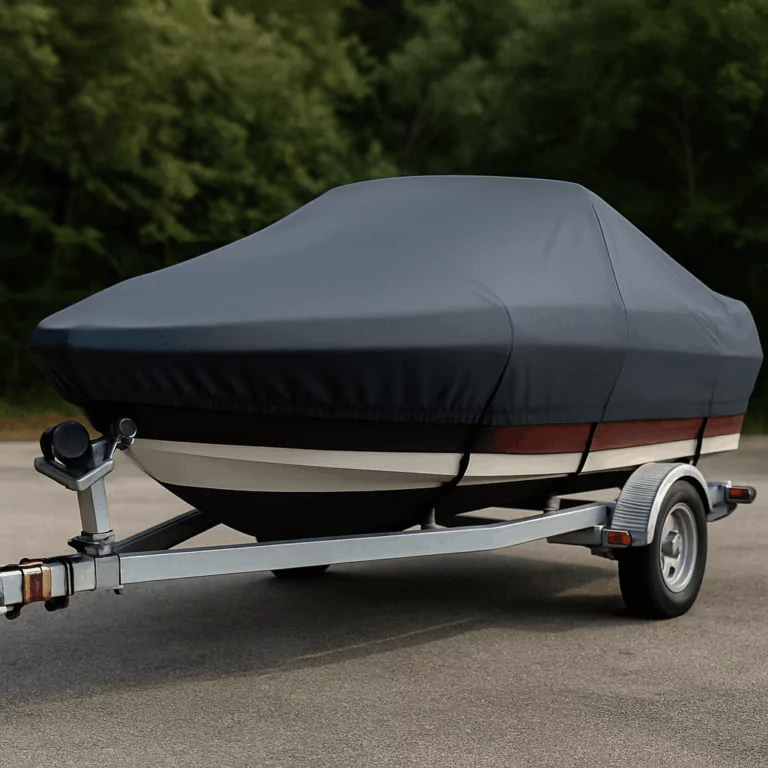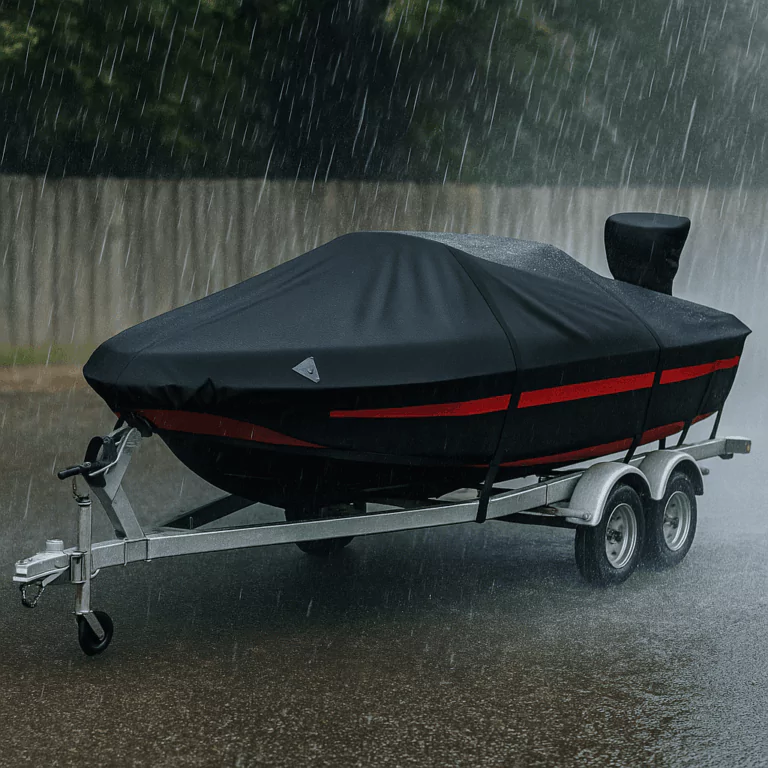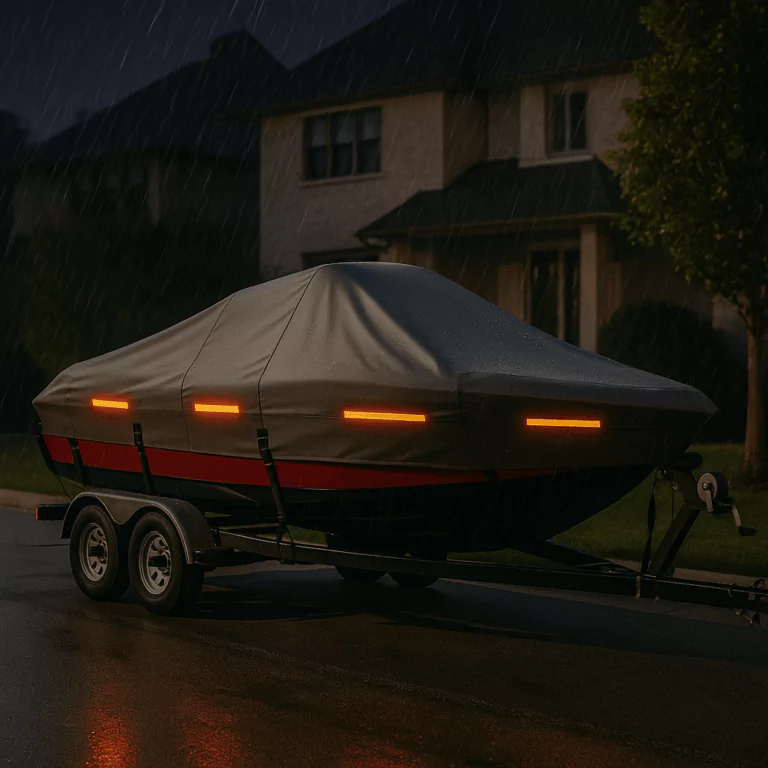
The Importance of Secure Straps on Your Boat Cover: Wind-Proofing Your Investment
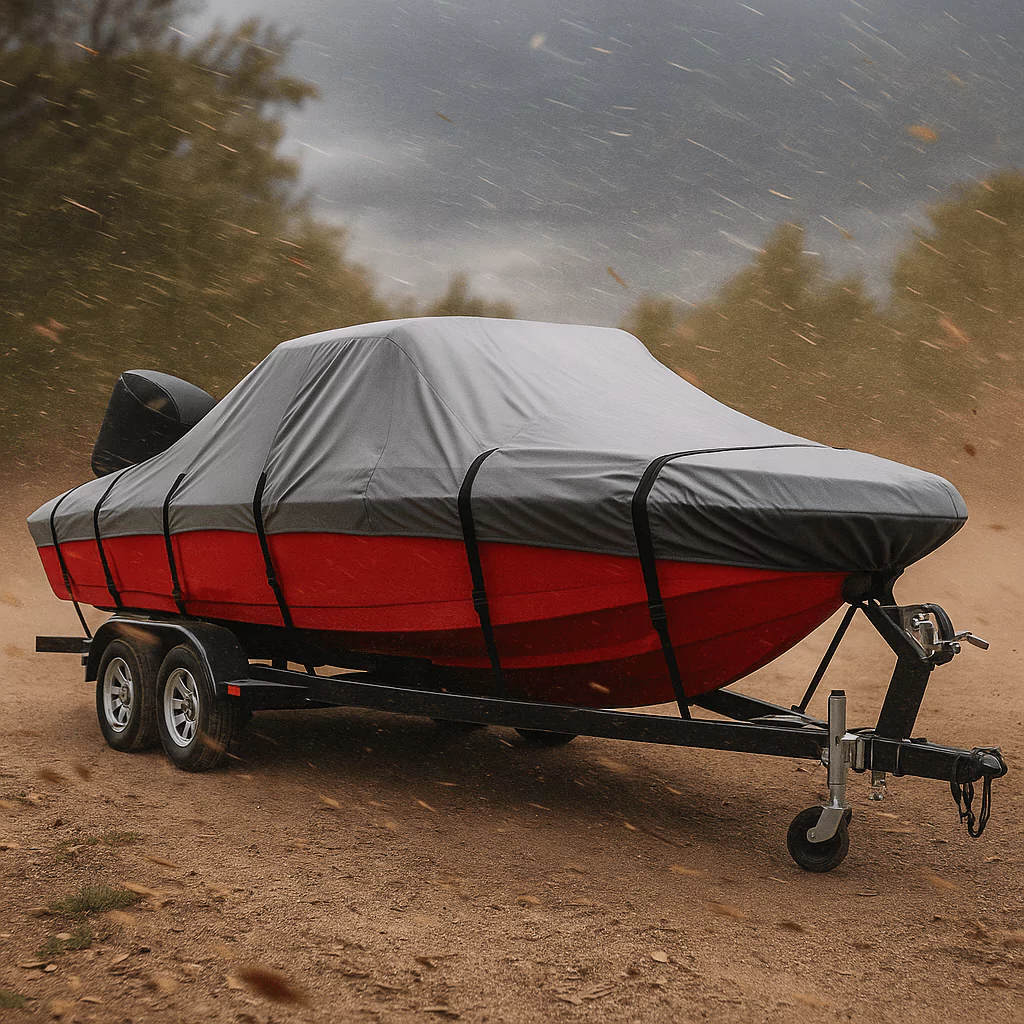
Introduction: Protecting Your Boat from Wind Damage
Owning a boat is a source of pride and joy, but it also comes with responsibility. From harsh sunlight to heavy rainfall, your vessel is constantly exposed to the elements. One of the biggest culprits behind boat damage, however, is often overlooked—the wind. While many boat owners invest in high-quality covers, they sometimes underestimate the role of secure straps. Without them, even the best cover can flap, shift, or tear, leaving your boat vulnerable to weather and wear.
Straps don’t just hold the cover in place; they provide peace of mind. They ensure that your investment remains protected, whether your boat is docked at the marina, parked on a trailer, or stored away for the off-season. At Safeboatz, we’ve seen time and again how secure strap systems are just as critical as the fabric itself.
Why Boat Covers Alone Aren’t Enough
Common Misconceptions About Boat Covers
Many boaters believe that simply draping a cover over their vessel is enough to keep it safe. Unfortunately, this assumption can lead to costly repairs. A loosely fitted or unstrapped cover can easily be caught by a gust of wind, turning it into a sail that whips against the hull, scratches the finish, or blows off entirely.
The Role of Straps in Securing Your Cover
Straps anchor the cover to the boat or trailer, distributing tension evenly to resist lifting forces. They prevent flapping that causes premature wear on both the cover and the boat’s surface. Safeboatz integrates reinforced straps directly into its covers, turning a standard cover into a protective shield that can withstand high winds.
How Wind Affects Unsecured Boat Covers
The Physics of Wind Pressure
Wind creates pressure differences around your boat. When a cover is loose, air can get trapped underneath, inflating it like a balloon. This leads to violent flapping, seam stress, and, in many cases, ripped fabric. The stronger the wind, the greater the risk.
Real-World Examples of Cover Damage
It’s not uncommon to see shredded covers hanging from boats after a storm. In worst-case scenarios, an unsecured cover can detach completely, exposing the boat’s interior to rain, dirt, and UV rays. This results in mold growth, waterlogging, and damage to upholstery and electronics.
The Benefits of Secure Straps on Boat Covers
Preventing Flapping and Tearing
Tightly fastened straps eliminate slack, keeping covers flush against the boat. This reduces fabric wear and prevents covers from tearing under stress.
Protecting Against Mold and Moisture
When a cover shifts, water can pool in pockets, creating breeding grounds for mold and mildew. Properly strapped covers maintain a snug fit, preventing sagging and reducing trapped moisture.
Extending the Lifespan of Your Boat and Cover
By minimizing movement and exposure, straps extend the life of both the boat cover and the boat itself. Safeboatz strap systems are specifically designed to maximize durability in high-wind conditions.
Types of Boat Cover Straps and Their Effectiveness
Adjustable Buckle Straps
Adjustable buckle straps are among the most common options included with boat covers. They allow quick tightening or loosening and are great for daily use.
Ratchet Straps
Ratchet straps are the heavy-duty choice. Designed for maximum tension, they lock covers tightly against the hull and trailer. Ideal for long-distance towing or storm-prone storage.
Shock Cord (Bungee) Straps
Bungee-style straps provide flexibility and convenience, but they’re not as reliable in extreme wind. Better suited for calm conditions or as backups.
Integrated Strap Systems vs. Aftermarket Add-ons
Some boat covers come with built-in strap systems, offering seamless protection and reducing the need for aftermarket solutions. Safeboatz covers include integrated straps while still allowing boaters to add reinforcement if needed.
How to Properly Secure Straps on a Boat Cover
Step-by-Step Guide to Strapping Your Boat
- Place the cover evenly across the boat, making sure there are no folds or loose areas.
- Locate anchor points on the hull or trailer.
- Start at the bow, working toward the stern.
- Tighten straps evenly on both sides.
- Double-check that no edges are lifting.
- Secure loose ends to prevent whipping in the wind.
Common Mistakes to Avoid
- Overtightening straps, which can tear fabric or damage grommets.
- Relying solely on bungees.
- Neglecting cross-strapping for trailer storage.
- Leaving slack for wind to creep underneath.
Seasonal Adjustments for Weather Conditions
- Summer storage: Slightly loosen straps to allow airflow.
- Winter storage: Tighten straps firmly to withstand storms and snow.
- Transport: Use ratchet straps and cross-tensioning for maximum security.
Choosing the Right Boat Cover with Reliable Straps
Material Considerations
Covers made from marine-grade polyester or canvas often include reinforced strap points. Safeboatz covers feature double-stitched anchors designed to resist tearing.
Fit and Design Factors
A custom-fit cover secures better than a universal one. Safeboatz semi-custom fits reduce excess fabric while ensuring reliable strap placement.
Top Features to Look for in Straps
- UV-resistant webbing
- Rust-proof buckles
- Reinforced anchor points
- Adjustable length for snug fits
Expert Tips for Wind-Proofing Your Investment
Double-Strapping for Extra Security
In high-wind areas, adding a second layer of straps can make the difference between a secured cover and a blown-off one.
Storage Positioning and Dockside Setup
Whenever possible, position your boat in a sheltered location. On trailers, park with the bow facing the wind.
Routine Maintenance and Strap Checks
Inspect straps regularly for fraying or stretching. Clean with mild soap and water to extend lifespan. Safeboatz recommends replacing worn straps immediately to avoid failure.
FAQs About Boat Cover Straps
Do all boat covers come with straps?
Not all. Many universal covers include basic straps, but premium brands like Safeboatz provide reinforced integrated systems.
How often should I check my straps?
At least once a month in storage and always before transport.
Can I use bungee cords instead of straps?
Only as supplemental support—not primary securing.
What’s the best strap system for high-wind areas?
Ratchet straps combined with cross-strapping. Safeboatz covers are designed with reinforced anchor points for this setup.
Should I replace straps when they show wear?
Yes. Frayed straps won’t hold under stress and should be replaced.
How do I stop straps from loosening over time?
Choose locking mechanisms like ratchets or cam buckles, and tie off strap ends.
Conclusion: Secure Straps as an Essential Investment in Boat Care
A boat is more than just a watercraft—it’s an investment, a source of adventure, and often a cherished part of the family. Protecting it should never be left to chance. While a quality cover shields against sun, rain, and dirt, secure straps are the key to wind-proofing your investment.
With reinforced systems like those found in Safeboatz premium covers, you can safeguard your vessel from destructive wind forces. In the end, straps are a small detail that deliver a big payoff: peace of mind, a longer-lasting cover, and a boat that’s always ready for the water.

